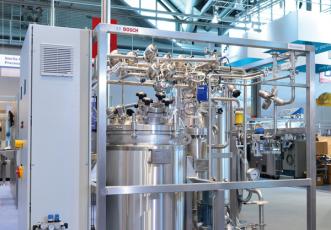Tips for clean in place (CIP) and steam in place (SIP) processes
SIP or Steam-In-Place
SIP stands for Steam-In-Place and is a common operation used in the Food, Beverage & Biotechnology industries to ensure to kill organisms in a process system. The operation uses thermal energy of condensing steam to sterilise the system.

Clean in place
Steam-in-place or Sterilisation-in-place is often used before clean in place operations. Clean in place or CIP cleaning is deployed to remove processing soils as the thermal resistance of microorganisms and spores can be enhanced by the protective effects of process soil, thus making SIP processes less effective.
Cleaning-In-Place (CIP) and Sterilization-In-Place (SIP) are systems designed for automatic cleaning and disinfecting without major disassembly and assembly work.
Here at PIF, we get asked all the time about the rules and guidelines for SIP processes, so here is our Top 10 SIP Tips (provided by Process Industry experts, Haskell).

SIP guidelines for sterile process systems:
- Perform Clean-In-Place (CIP) operations before SIP operations – to remove processing soils.
- Confirm steam supply header presser and temperature – to ensure a saturated steam supply
- Introduce saturated steam supply as high as possible in the system to push out ambient system gases through monitored process low points.
- Install low point steam trap blocking valves and temperature sensors to measure temperature at process low points.
- Use monitored high point air bleeds to ensure complete elimination of air from the processing system.
- Avoid parallel steam paths as pressure differences during the air removal stage can prevent proper steam exposure and will result in sterility failures.
- Plan SIP operation to have steam flow and process flow in the same direction to take advantage of the existing process piping pitch and support for process drainability – avoid hoses, dead-ends and non-drainable low points.
- Include a time delay following saturated steam to allow system components to achieve the desired set point temperature.
- Provide a means of active steam flow to the process during SIP hold to ensure required thermal treatment has been achieved.
- Finally, protect the sterile process boundary as the condensate is drained from the system
For more information about SIP or CIP processes, read this detailed article covering SIP guidelines for sterilisation of process systems.
Get the latest process industry news
Interested in receiving even more industry-leading news from Process Industry Forum delivered directly to your inbox? Then sign up to our free newsletter. Bringing you the latest news, trends, innovations and opinion from across the process industry, our exclusive newsletter gives you all the industry insights of the moment in one, easy-to-digest bulletin. Stay ahead of the competition with regular process industry news instalments from PIF.

